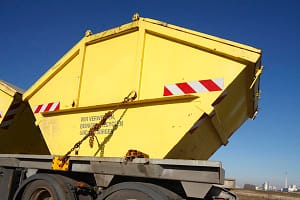The first printing press was made by Johannes Gutenberg in Germany around 1439, and printing has come a long way since. There are many different types of printing and techniques you can use to print words and pictures on a piece of paper and other surfaces. From the humble dot matrix to cutting-edge 3D printing, the choices available today cater to various needs. Below, you can see some of the different types of printers and techniques you can use that have transformed the way we print in the 21st century.
Dot matrix printers
While less common today, dot matrix printers have left an indelible mark on the history of printing. These printers use a matrix of small pins to strike an inked ribbon, transferring characters onto paper through impact. Though they may seem old-fashioned, dot matrix printers find niche applications in environments requiring multipart forms or carbon copies, such as in some invoice and receipt printing. The distinctive sound of dot matrix printers may evoke nostalgia for those who remember the early days of personal computing, but their use has diminished with the rise of more advanced and quieter printing technologies.
Inkjet printers
One of the most prevalent types of modern printers is the inkjet printer, which is renowned for its versatility. An inkjet printer propels liquid ink droplets onto paper, producing high-quality prints with sharp details and vibrant colours. Inkjet printers are particularly popular in home and small office settings due to their affordability and ability to handle a variety of media, including glossy photo paper and business envelopes. The advent of thermal inkjet technology has significantly enhanced the precision of these printers. With microscopic nozzles and controlled heating, inkjet printers can produce intricate designs and detailed images, making them a preferred choice for graphic designers and photographers.
Inkjet coding printers
An inkjet coder is a sophisticated printing device widely used in industrial applications for marking and coding products. Employing advanced inkjet technology, it precisely deposits ink onto various surfaces, enabling the printing of alphanumeric codes, barcodes, dates, and logos. It is a non-contact method that is highly efficient, allowing for rapid and high-resolution printing on diverse materials such as cardboard, plastic, metal, and glass. Inkjet coders find extensive use in the packaging industry, facilitating accurate labelling for product identification, traceability, and compliance. These coders enhance production line efficiency with customisable features and low maintenance requirements while ensuring clear and durable markings.
Laser printers
In an office environment, laser printers reign supreme, and these printers employ a laser beam to create static electricity on a photosensitive drum, which attracts toner particles and transfers them onto paper. The result is fast, high-resolution prints, making laser printers ideal for handling large volumes of text documents. Laser printers are known for their speed and cost-effectiveness per page, and they are the go-to option for businesses requiring efficient and high-volume printing. Additionally, laser printers excel in producing sharp text and are often chosen for professional document printing, such as reports and presentations.
Screen printing
Screen printing is a traditional technique that has stood the test of time and is still popular in multiple industries. This manual process involves using a mesh screen to transfer ink onto a substrate, creating a print. Screen printing is renowned for its versatility, allowing for printing various materials, including paper, fabric, and even glass. Artists and designers often favour screen printing for its ability to produce vibrant, textured prints with a unique handcrafted feel. From gig posters to custom T-shirts, screen printing remains popular for those seeking a more tactile and personalised printing experience.
Dye sublimation printers
For those seeking high-quality photo prints with true-to-life colours, dye-sublimation printers are an excellent choice. This printing technique uses heat to transfer dye onto various materials, including paper, plastic, and fabric. Dye-sublimation excels in capturing subtle gradients and producing prints with a professional finish, making it popular among photographers and artists. The process involves the conversion of solid dye into a gas, which permeates the printing medium and solidifies upon cooling. The result is stunningly vibrant prints with a smooth, continuous tone. Dye-sublimation printers often produce photo prints, banners, and promotional materials, which can also be expensive.
3D printers
A revolutionary addition to the printing landscape is 3D printing, also known as additive manufacturing. Unlike traditional printing, which applies ink to a surface, 3D printing builds objects layer by layer using materials such as plastics, metals, or ceramics. This technique has found applications in various fields, from prototyping in engineering to creating bespoke medical implants. The ability to turn digital designs into tangible three-dimensional objects has opened new possibilities in product development and customisation. From intricate prototypes to personalised consumer goods, 3D printing is currently reshaping various industries and sparking innovations.
Whatever your printing requirements, one of the above printers will suit the task and can be an excellent asset for your business.






Leave a Comment